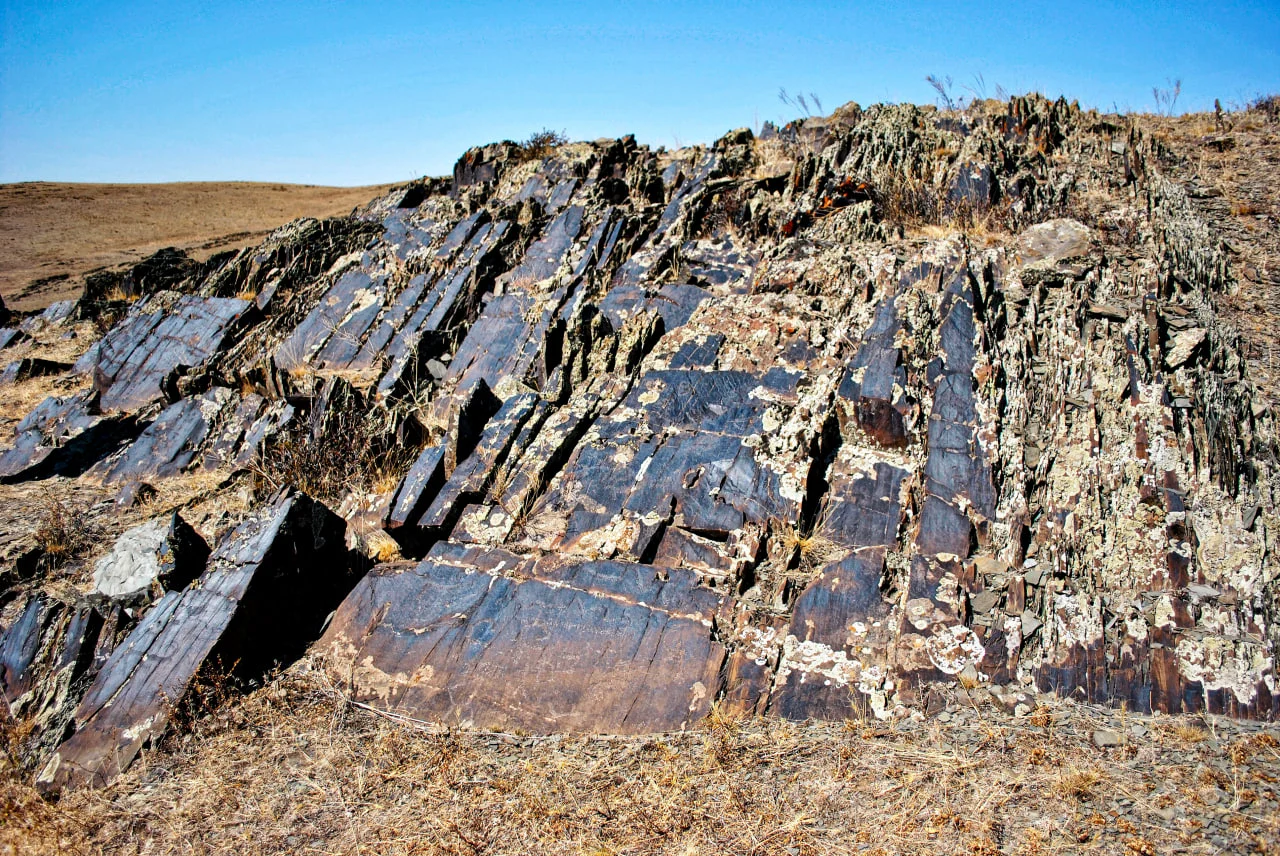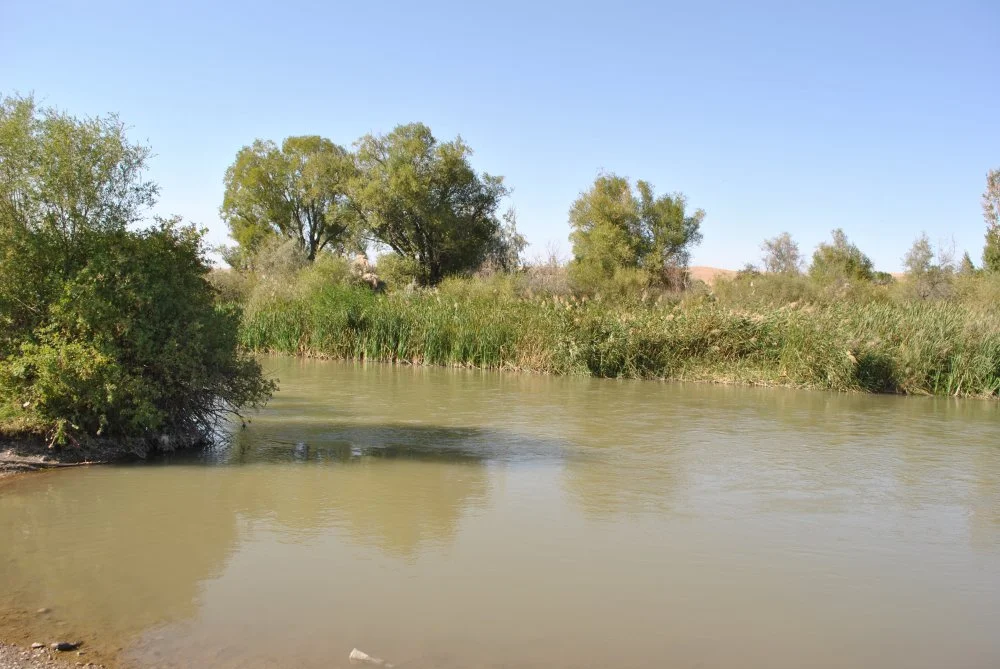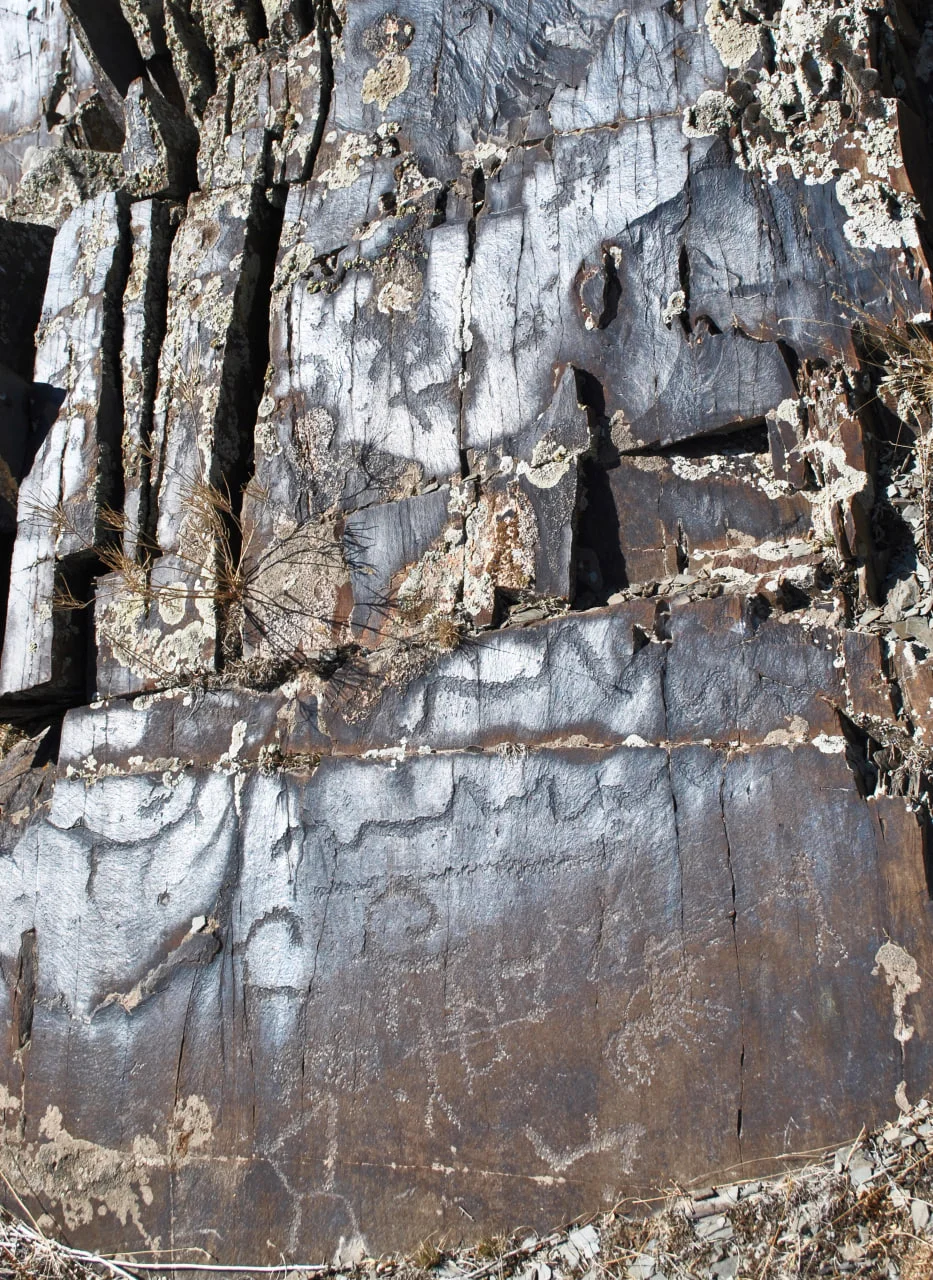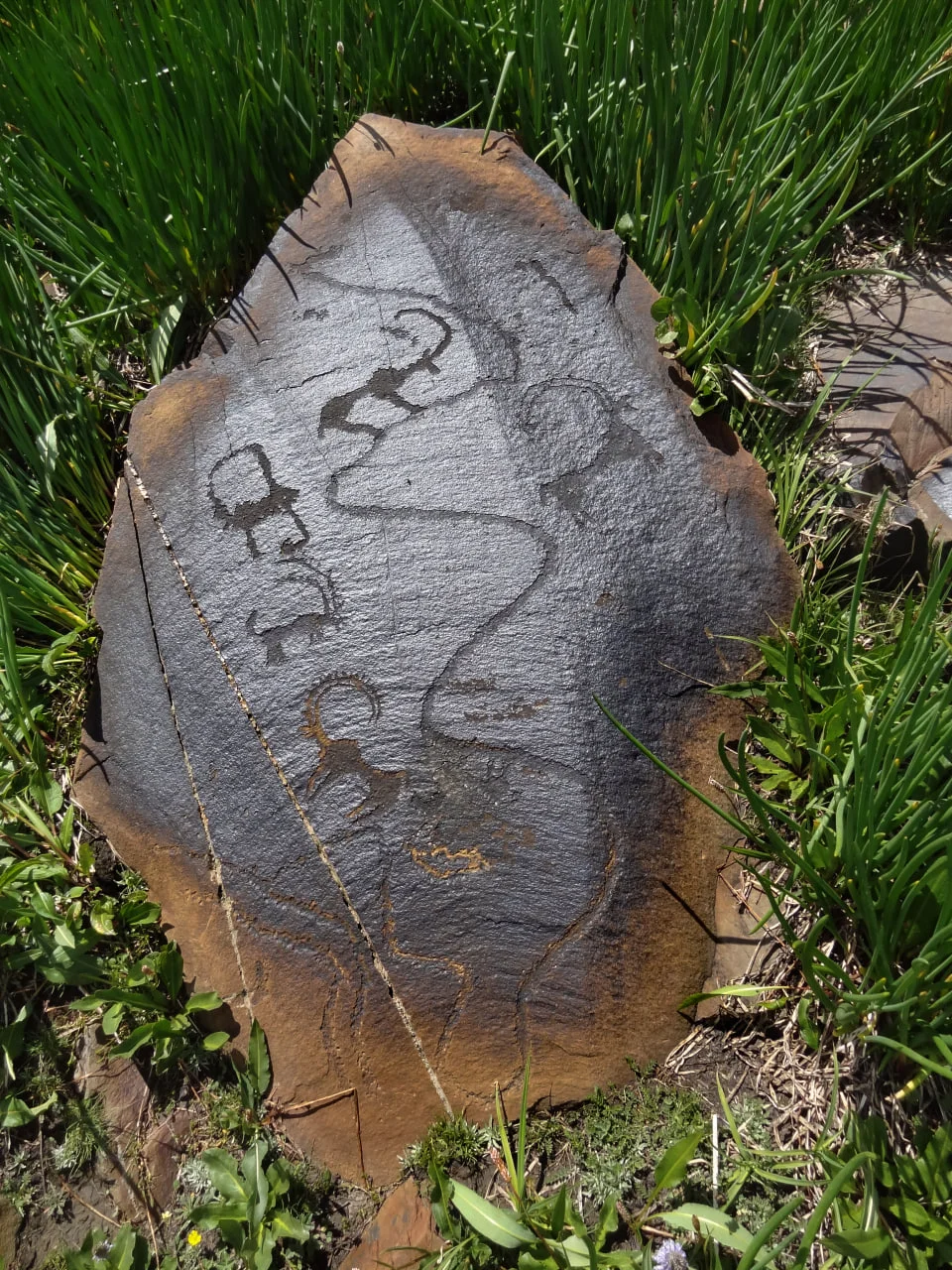The Tailed Mystery
A Slithering Mystery or the Routes of Ancient Explorers?

The rocks with the drawings are being destroyed by time and human impact. Gabaevka/Olga Gumirova
In the Gabayevka cluster of the Jambyl Region, an ancient slab of stone features images that most archeologists believe represent snakes. The two horizontal, sinuous lines on the stone, which cross almost near the centre of a large slab damaged by time, strongly resemble these reptiles. Interestingly, this area is also home to a large population of common vipers and pit vipers.
The Lesser Karatau Ridge is a harsh and unforgiving terrain. The summer brings an exhausting, scorching heat, and the winter is cold and snowy, with the icy wind that cuts to the bones. From the sanctuary, the view is magnificent. At the foot of the mountains flows the River Teris, its banks drowned in curly thickets of silver oleaster. This is the border between two Central Asian nations, and beyond it are the colorful fields of the Talas Region of Kyrgyzstan and the majestic snow-capped peaks of the Alatau mountain range.

The Teris River - the source of life. Gabaevka/Olga Gumirova
Even though the place is deserted today, 4,000 years ago in the Bronze Age, it was one of the most important sanctuaries of antiquity and was situated along key migratory and cattle routes. Therefore, the question of whether the ancient painting really depicts snakes or is something else is not an idle one because the answer will help us better understand the way of life and thinking of the people who once inhabited these lands.

Scene with snake-paths. Gabaevka/Olga Gumirova
First, the ancient shamans did not mark the heads of the alleged ‘snakes’: they are represented by two curved lines, which is quite unusual for this kind of image, even the most sketchy ones. The indication of the head, however conditional, was crucial in the drawing of living creatures.
Second, the snakes do not interact in any way with the human and animal figures next to them—they simply divide the plane in two. Third, when viewed from above, the canyons between the petroglyphs closely mimic the silhouettes of the two snakes. Another important point is that there is a pass just above the junction of the gorges.

A goat walking along a path. Saimalytash/Olga Gumirova
Incidentally, similar combinations of serpentine lines and people or hoofed animals walking side by side have been recorded in large numbers at the petroglyph cluster in Saymaluu-Tash, Kyrgyzstan, located exactly on the pass that separates the two valleys.
Thus, it seems likely that the scene with lines is not an illustration of some ancient myth featuring a snake as the protagonist but most likely simply a map of the area that helped travelers navigate the labyrinth of mountains. Among other things, such a map could serve as a mystical protection for travelers on their way.



